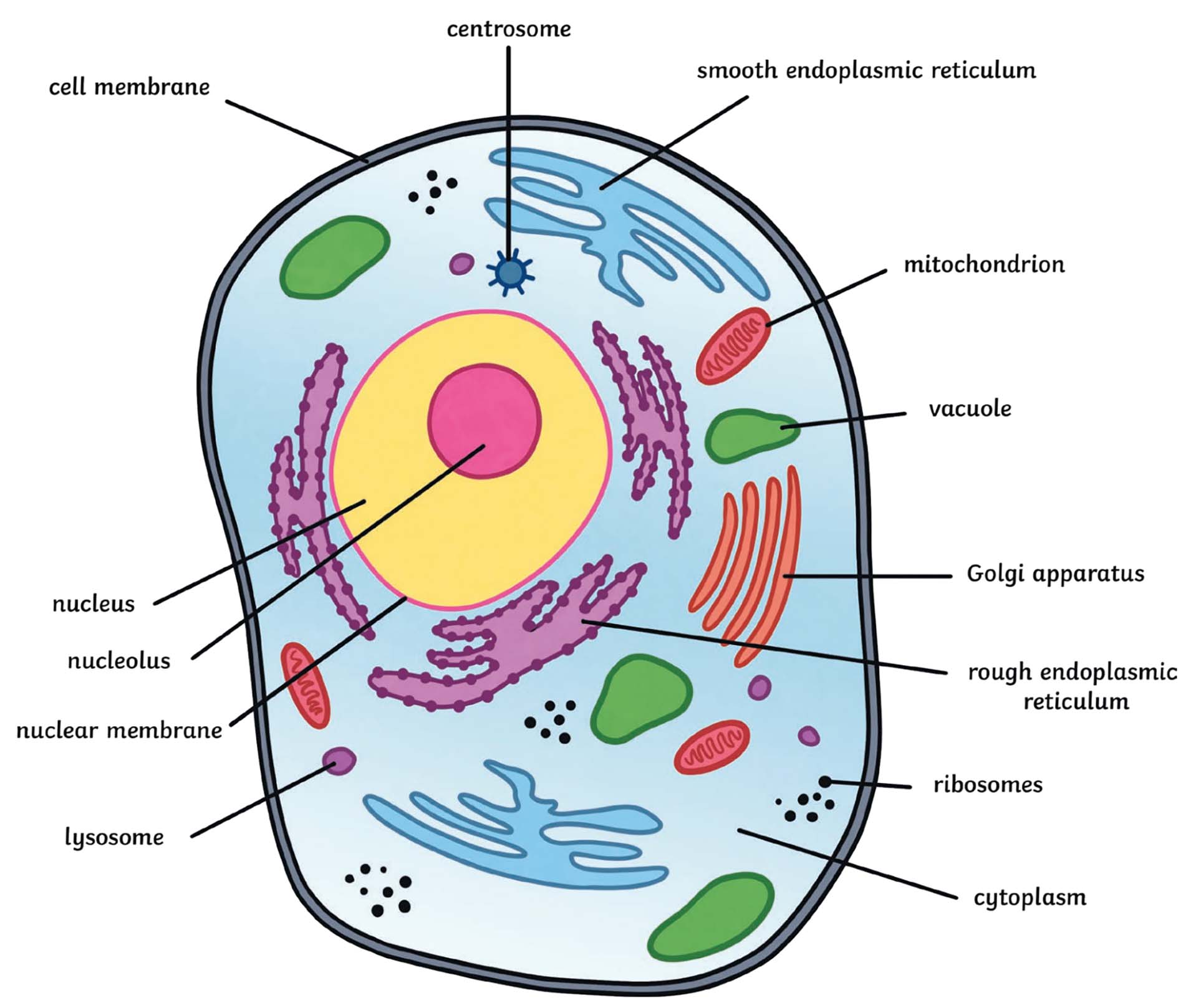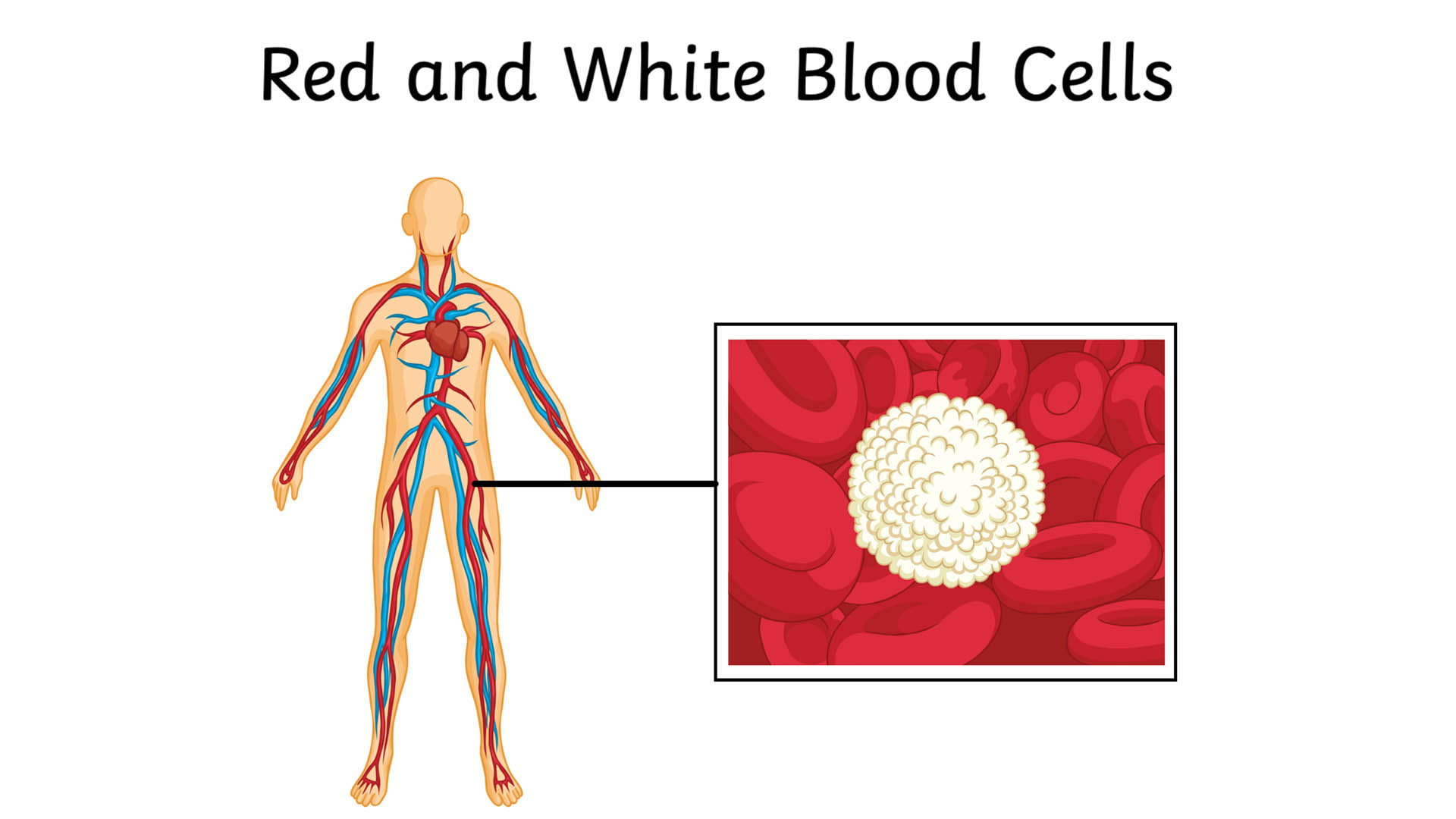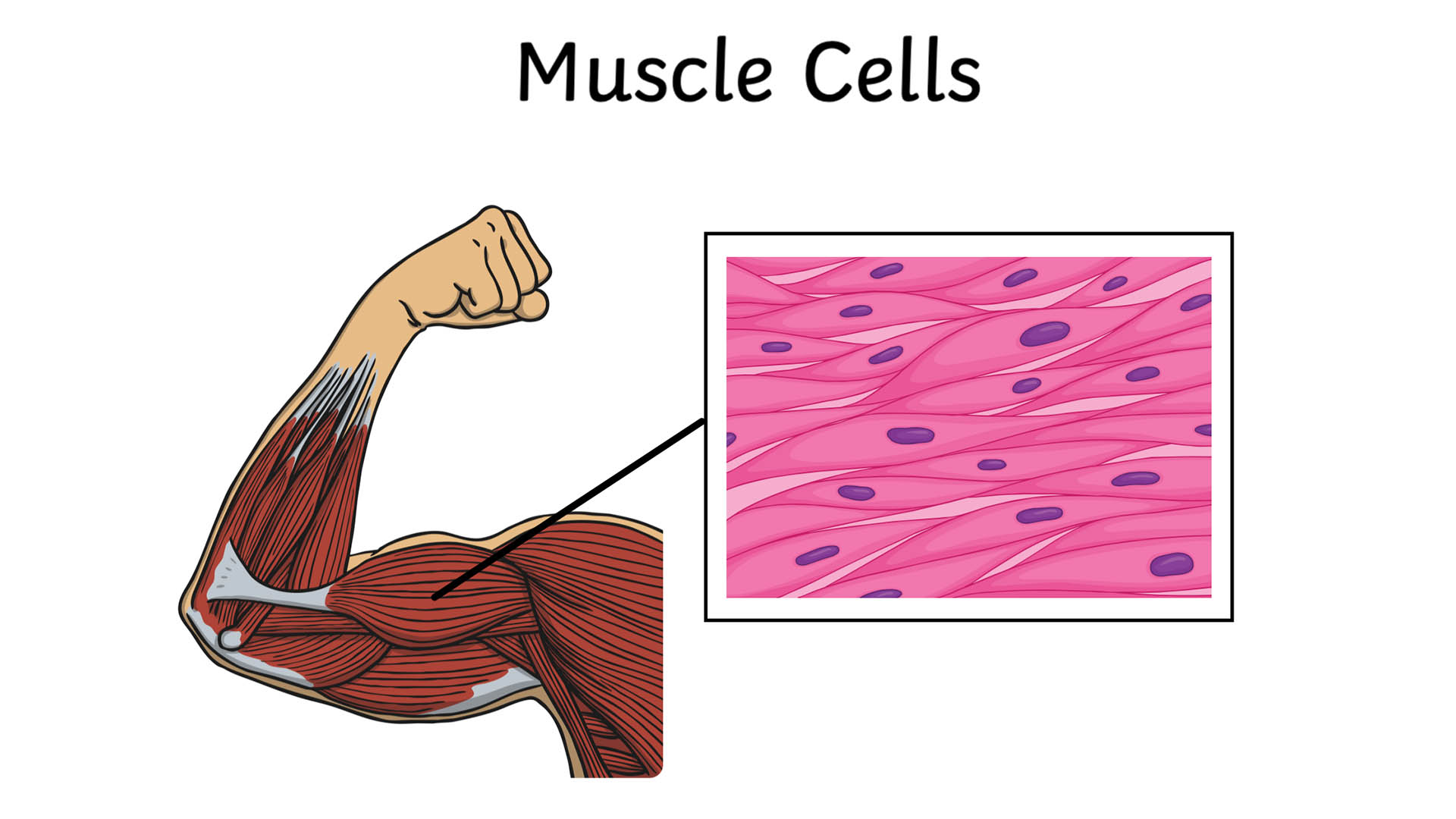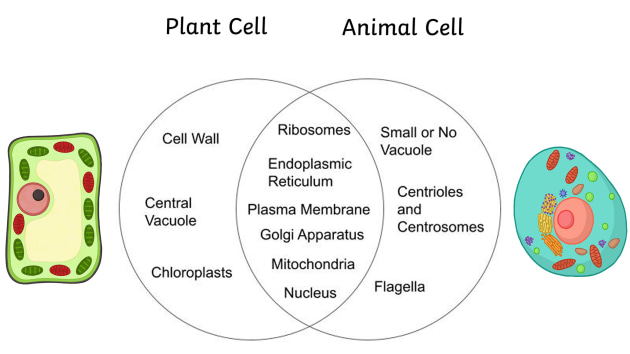


Animal cells are the building blocks that make up all living organisms in the kingdom Animalia.
They give bodies structure, absorb nutrients to convert to energy, and help animals move. They also contain all the hereditary material of an organism and can make copies of themselves.
These cells are further described as being eukaryotic cells. Eukaryotic cells have a well-defined nucleus surrounded by a nuclear membrane. The nucleus is where the cell’s DNA is located. Animals, as well as plants, fungi, and protozoa, are made up of these types of cells.
Animals are composed of multiple cells, termed multicellular, that function together and make up the tissues and organs that form the body of the animal. In fact, because there can be so many complex functions required, many of these cells can look and act differently from one another. For example, there are nerve cells, blood cells, muscle cells, and more!
However, the overall structure of animal cells remains very similar.
You can share this brief What is a Cell? presentation with your children. It provides a simple definition of a cell, explores what cells do, and introduces the scientist that discovered these basic units of life.
Animal cells are made up of several parts, called organelles, that work together and enable the cell to function.
This is what an animal cell looks like:

The organelles of an animal cell include the following:
Let’s discuss these organelles in more detail below.
The nucleus is the “brain” of the cell because it directs what happens within the cell.
It contains the cell's genetic information called deoxyribonucleic acid (DNA). The DNA provides the information required for making the proteins that control the activities of the cell. The DNA and histone proteins are then put together to form chromosomes.
The nucleus is surrounded by the nuclear membrane, which separates the nucleus from the rest of the cell. Inside the nucleus (in addition to the cell’s DNA) is the nucleolus. This is where ribosomal RNA (rRNA) works with proteins to form ribosomes, which are then transported to the cytoplasm.
Along with storing the cell’s genetic information, the nucleus oversees the cell’s activities. This includes regulating growth and cell division, or mitosis.

The cell membrane acts as a fence around a cell.
The cell membrane, also known as the plasma membrane, is a selectively permeable membrane that controls the entry and exit of materials. These materials may include nutrients that need to be brought into the cell and toxic elements that need to be released from the cell. The cell membrane also helps to protect the cell and separates the cytoplasm from the surrounding environment.
All the parts that make up the cell are enclosed within the cell’s plasma membrane.
The cytoplasm contains the parts, otherwise known as organelles, within a cell.
The function of the cytoplasm is to maintain the cell’s shape with the help of the cytoskeleton (a network of actin filaments, intermediate filaments, and microtubules) and cytosol (the gel-like fluid within the cell).
The mitochondria act as the energy supplier for the cell.
The mitochondria are structures within the cytoplasm that control aerobic respiration. The function of mitochondria is to take nutrients and produce the energy needed to power the biochemical reactions of the cell. This energy takes the form of adenosine triphosphate (ATP), which is a molecule used for storing and transferring energy within a cell.
The ATP functions similarly to a rechargeable battery, which is then used to power several processes within the cell.
Ribosomes could be called the “manufacturing department” of the cell.
Ribosomes take and translate information from the rRNA that is needed to create the proteins for the cell. Proteins are very important in cells because they provide the structure and support to help cells function.
Ribosomes are found floating around in the cytoplasm or attached to the endoplasmic reticulum.
The lysosome is the “waste disposal and recycling center” for the cell because they destroy old proteins to reuse them.
A lysosome is a membrane-bound organelle that contains enzymes required for digesting and recycling cell by-products. Lysosomes are also responsible for getting rid of waste through a process known as autophagocytosis, where old and no longer working cell parts are removed from the cell.
Vacuoles act like lockers because they store things for the cell.
They are membrane-bound sacs that store food, water, and waste. Its function is very similar to the lysosome.
The centrosome acts like an event planner.
The centrosome is found only in animal cells and is responsible for organizing cell division. It is made up of two microtubule rings that are called centrioles. The centrosome organizes the microtubules into position before duplicating or dividing the cell.
The endoplasmic reticulum is the “bakery” of the cell because it makes proteins.
The endoplasmic reticulum (ER) is a network of membranes within the cytoplasm. There are two types of ER within a cell: the rough endoplasmic reticulum (rough ER) and the smooth endoplasmic reticulum (smooth ER).
The rough ER is made up of tubules, cisternae, and vesicles, and plays an important role in producing and processing proteins for the cell. The smooth ER is in charge of several processes including the synthesis of lipids, the production of steroid hormones, and getting rid of toxic by-products which could negatively impact the cell.
You can think of the Golgi apparatus as being the “delivery service” or “mailroom” for the cell.
The Golgi apparatus, also known as the Golgi body, takes the proteins and lipid molecules that are processed by the endoplasmic reticulum and places them into vesicles to be distributed either within or outside the cell.
There are millions upon millions of cells that make up an animal. Human beings are made up of over 40 trillion cells. Each animal cell has a critical function that helps the body work as a whole to survive and thrive. Let’s look at a few of these important cells.
The main function of skin cells is to protect the animal.
As humans, our skin protects our bodies from the cold, germs, sun rays, and more! It also helps regulate our body temperature and enables us to feel sensations such as heat or pain, which protects us again as it gives us warning signals.
There are three layers of skin. The outer layer is called the epidermis, the middle layer is called the dermis, and the deepest layer is called the hypodermis. The epidermis is made up of several variations of skin cells, the majority being keratinocytes.
There are two different types of blood cells: red blood cells and white blood cells. Red blood cells make up the majority of blood cells in the body.
The function of red blood cells is to carry oxygen from the lungs to other parts of the body and to collect carbon dioxide. Mature red blood cells are the only animal cells that don’t have nuclei. This is to enable the cells to carry more hemoglobin and more oxygen.
The purpose of white blood cells is to help battle infections. They are an important part of the immune system!

Nerve cells, also known as neurons, are the primary cells of the nervous system. The function of these cells is to use electric and chemical signals to send and receive messages from your brain. In vertebrate animals, like humans, these neurons are the main components of the brain, spinal cord, and peripheral nervous system.
Neurons impact the state of our internal organs (think how our heart beats faster when we are frightened), help us decide how to act and move, and help us to think and remember what’s going on.
It’s estimated that we have approximately 86 billion neurons in our brain.
A muscle cell, also called a myocyte, has one primary function - contraction. Muscle cells use motor proteins to shorten their length (or contract) when directed to do so by the neurons. When there is no signal from the neurons, the muscle cell will be in a relaxed state.
Muscle cells make up the three different types of muscles in our body: skeletal, cardiac, and smooth. They help us move our limbs and organs.

Fat cells, known as adipose cells, also have a very important role in the human body. These cells store fats and lipids that then store and provide the body with energy when required. This energy is in the form of triglycerides.
In addition to storing energy, fat cells help in sensing and responding to changes in energy levels. They can impact processes such as insulin sensitivity as well as protect against hypothermia and diabetes.
According to Britannica, a cell (in biology) is described as being “the basic membrane-bound unit that contains the fundamental molecules of life and of which all living things are composed.” In summary, cells are the building blocks of all life.
By this definition, both animals and plants are made up of cells. While there are several similarities, there are also some notable compositional differences. Below you’ll find several key differences between animal and plant cells.

There are several resources you can use alongside your life science and biology lessons to equip students with the knowledge needed to answer the question, "what is an animal cell?". Simply select which ones you’d like to use, then download and print or share with your students!
Provide your students with a comprehensive overview of cells and talk about their structure and functions. You can also talk about when cells were discovered and the reason behind the name “cell.”
Help children answer the question, "what is animal cell?" by learning and labeling the organelles that form animal cells.
Encourage your students to remember the function of each cell organelle with this creative and printable activity. Includes an answer key to help you grade papers quickly. Or, why not share it with your students to enable them to assess their own work.
Share or display this colorful poster with your children to show the differences between plant and animal cells. It’s a handy tool that can be used as a reference when discussing the different parts of a cell.
For a slightly more in-depth look at how we came to know what we know about cells, check out the clip below: